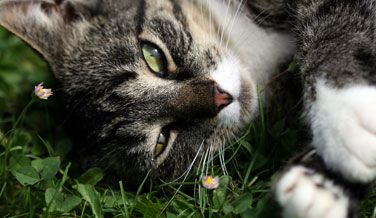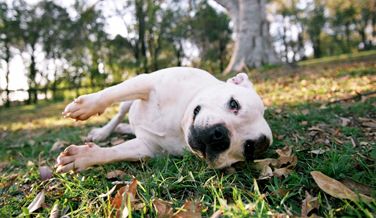PROVIDING QUALITY VETERINARY EYE CARE AT A FAIR COST
TO GIVE YOUR LOVED ONES A BETTER LIFE
KCS/Dry Eye
What Is “Dry Eye”?
“Dry eye syndrome”, (otherwise known as keratoconjunctivitis sicca) often results from a lack of tear production. The cause of dry eye is usually unknown but some known causes include: congenital disorders, infections, drug–induced (sulfa antibiotics, Etogesic), and removal of the tear gland of the nictitans gland (cherry eye). The disease is seen very commonly in certain breeds such as Cocker Spaniel, Shih Tzu, Lhasa Apso, Bulldog, Schnauzer, and West Highland White Terrier.
What Are The Symptoms Of KCS?
The clinical signs of dry eye include: heavy mucus production, redness, rubbing at eyes, cloudy eyes, corneal ulcers, and sometimes lethargy. After an extended period of dryness, the surface of the eye begins to accumulate dark scar tissue and blood vessels – to the point of blindness in some patients! This situation is similar to having a layer of mud covering your glasses.
How Is KCS Treated?
Our treatment goals for dry eye include stimulation of tears, lubrication, and decreasing the scar tissue. There has been a major breakthrough in the treatment of this disease with the development of the drugs Cyclosporine and Tacrolimus, both anti-rejection drugs used in organ transplant surgeries. These drugs are about 75% effective in stimulating new tears in the patient. Both must be used as directed for optimal results. If you skip a dose or run out of the medication, then dry eye signs will immediately recur. In addition, it is crucial that you have your pet checked as directed to monitor treatment success. Some patients respond better to one medication than the other. Tacrolimus is slightly stronger than the cyclosporine, so pets that no longer respond to the first drug may show improvement if treated with the second. Ocular lubrication is best provided by the more viscous artificial tear preparation such as GenTeal gel drops, Refresh Liquigel drops, Thera Tears liquid gel drops, or Celluvisc drops. If the tear stimulation treatment improves the tear production rate, then the lubrication drops can be used less often.
What Happens If the Medication Doesn’t Work?
In some pets, the tear production does not improve and, other than frequent application of the artificial tear lubrication, the only other procedure that provides moisture to the eye is a salivary duct transposition surgery to reroute saliva to the eye surface. This is called a parotid duct transposition.
Please feel free to ask further questions about dry eye to our outstanding support staff.
Our Services
Our doctors will perform a complete eye examination on your pet with the assistance of our nurses. This includes examining the eye with a head set, hand lens, panophthalmoscope and slit lamp to aid in magnification of different parts of the eye.
Companion Animal Eye Registry
The purpose of the OFA Companion Animal Eye Registry (CAER) is to provide breeders with information regarding canine eye diseases so that they may make informed breeding decisions in order to produce healthier dogs.
Contact Us
Learn more about any of the animal eye care services we offer and current availability.




